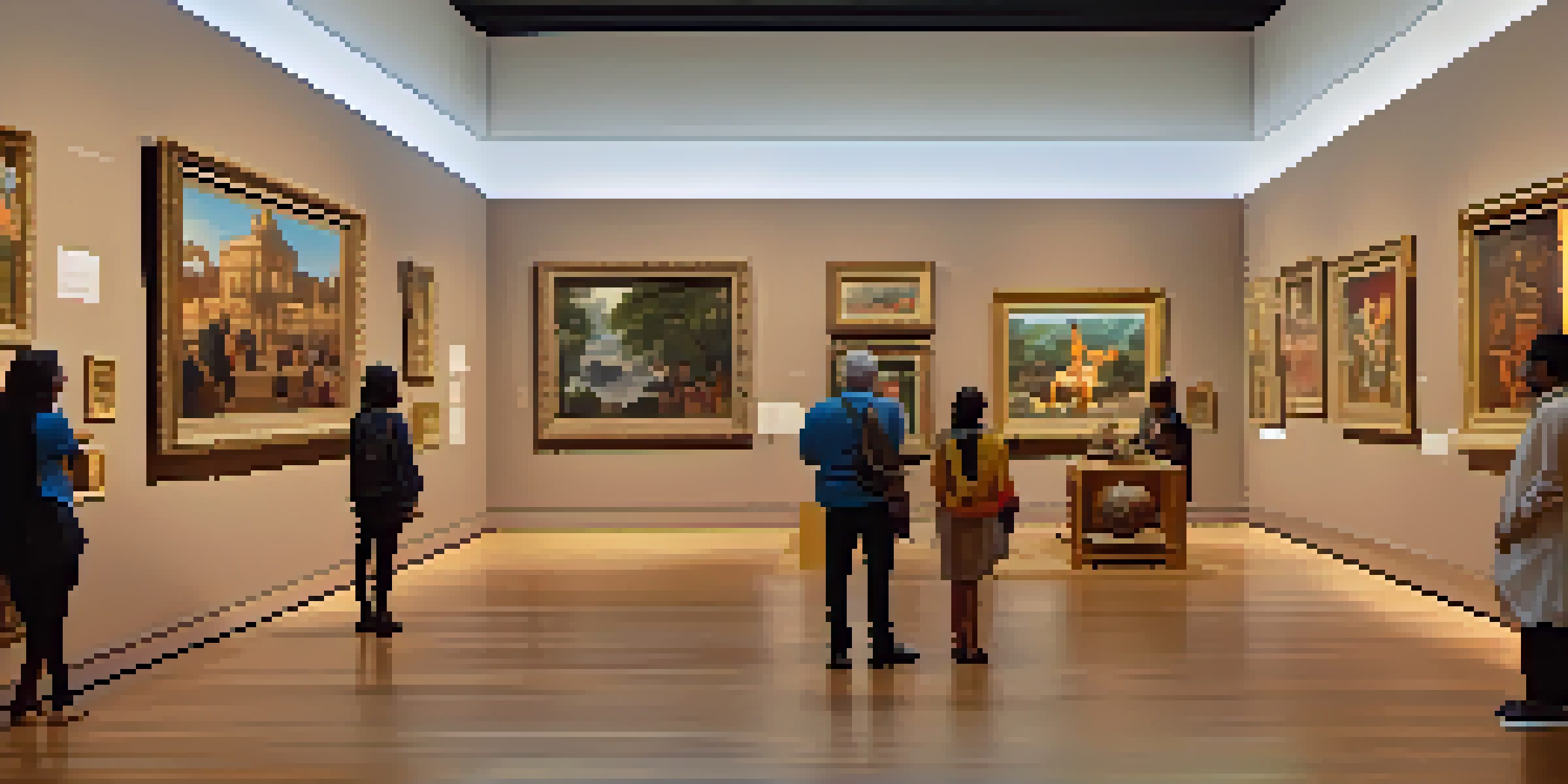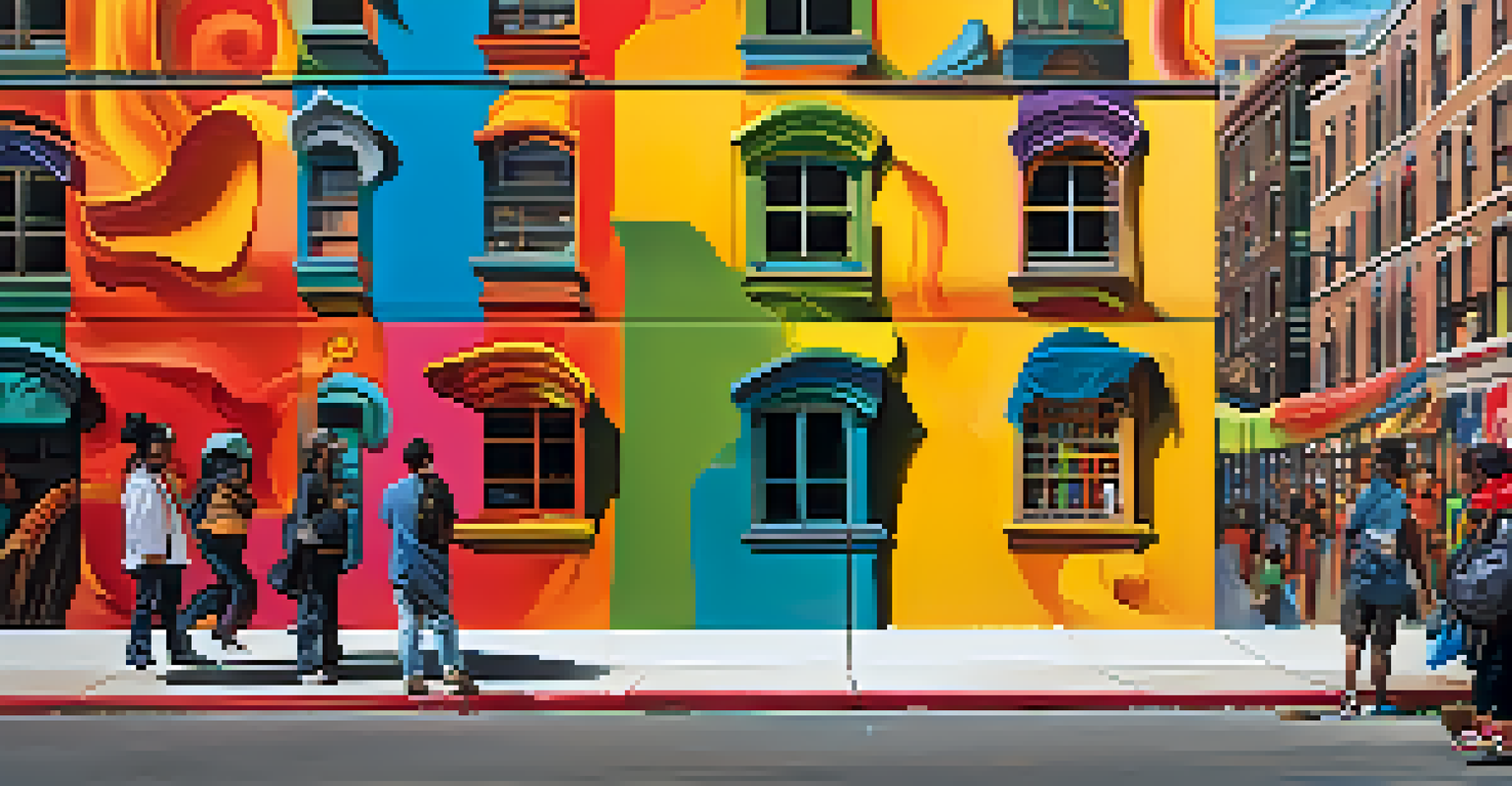The Impact of Cultural Heritage on Art Market Values

Understanding Cultural Heritage in the Art World
Cultural heritage encompasses the traditions, customs, and artifacts that define a community or society. In the art world, this can include everything from ancient sculptures to contemporary works that reflect local narratives. By valuing these creations, societies can preserve their identities and pass them on to future generations.
Art is the most beautiful of all lies; it is a truth that we can live by.
Artworks are often seen not just as aesthetic objects but as carriers of cultural significance. For instance, a piece from the Renaissance may fetch a higher price because it represents a pivotal moment in art history. This connection between culture and art adds layers of meaning that can drive up demand and, consequently, market values.
In today's global marketplace, understanding the cultural context of an artwork can enhance its desirability. Collectors and investors are increasingly drawn to pieces that tell a story or embody a rich cultural legacy, making cultural heritage an essential factor in appraising art.
How Cultural Heritage Shapes Art Valuation
The valuation of art is highly influenced by its cultural significance. Experts often assess an artwork's provenance, or history of ownership, which can reveal its cultural impact over time. A strong provenance can elevate an artwork's value, as collectors see it as an investment in both financial terms and cultural significance.

Additionally, artworks that are tied to specific cultural movements or historical events often command higher prices. For instance, pieces from the Harlem Renaissance or the Mexican Muralism movement are not only valued for their artistic merit but also for their historical context. This connection can lead to increased interest and competition among buyers.
Cultural Significance Drives Value
Artworks are valued not just for their aesthetic appeal but for the cultural narratives they represent, influencing their market demand.
Moreover, auctions frequently showcase how cultural narratives can shift market values. When a previously undervalued artist gains recognition due to their cultural contributions, the prices of their works can skyrocket, demonstrating how cultural heritage can redefine the art market landscape.
The Role of Cultural Institutions in Art Pricing
Cultural institutions, such as museums and galleries, play a crucial role in shaping art market values. They often curate exhibitions that highlight specific artists or cultural movements, drawing public attention and increasing demand for related artworks. This can significantly impact pricing, especially for pieces that become associated with high-profile exhibitions.
Cultural heritage is the foundation of our identity and the key to our future.
Furthermore, institutions help authenticate and document artworks, which adds to their value. A piece that has been verified by a reputable institution carries more weight in the market, as collectors seek assurance of its significance and authenticity. This relationship between art institutions and market values is vital for both buyers and artists.
As cultural institutions increasingly engage with communities, they also foster appreciation for local artists. This can lead to a rise in the value of artworks that reflect the community's heritage, as collectors look to invest in pieces that resonate on both personal and cultural levels.
Cultural Heritage and Global Art Trends
The globalization of the art market has led to an increased appreciation for diverse cultural heritage. As collectors become more aware of global art movements, they seek pieces that reflect a wider range of cultural narratives. This shift has broadened the scope of what is considered valuable in the art world.
For example, African art has gained significant traction in recent years, with collectors recognizing its rich history and cultural significance. This has not only increased the market value of African artworks but has also encouraged a more inclusive understanding of global art movements.
Institutions Shape Market Trends
Cultural institutions play a vital role in enhancing the value of artworks by curating exhibitions and authenticating pieces.
In this interconnected world, cultural heritage can transcend borders, influencing art trends worldwide. Artists who incorporate elements from their cultural backgrounds into their work often find greater visibility and appreciation, which can lead to increased market values.
Art Market Dynamics and Cultural Heritage
The art market is a complex ecosystem influenced by various factors, including cultural heritage. Changes in societal values can lead to shifts in demand for certain types of art. For instance, as communities place more emphasis on preserving their cultural identities, artworks that reflect these themes may see a rise in value.
Additionally, the rise of digital platforms has created new opportunities for artists to showcase their cultural heritage. Online galleries and virtual exhibitions allow for greater accessibility and exposure, driving interest and potentially increasing the market value of culturally significant pieces.
However, it’s essential to recognize that the art market can sometimes commodify cultural heritage, leading to ethical concerns. As demand rises, the risk of appropriation and misrepresentation also increases, highlighting the need for sensitivity and respect in valuing cultural narratives.
The Impact of Collectors on Cultural Heritage Values
Collectors play a pivotal role in determining the value of artworks tied to cultural heritage. Their interests and investments can significantly influence market trends, often driving up the prices of specific artists or styles that resonate with their cultural narratives. This dynamic can lead to a greater focus on preserving and promoting cultural heritage through art.
Moreover, collectors who prioritize cultural significance often seek to educate others about the works they purchase. By sharing the stories behind their collections, they contribute to a broader understanding of cultural heritage, which can enhance the perceived value of these artworks in the market.
Globalization Expands Art Appreciation
The globalization of the art market has led to a broader understanding and appreciation of diverse cultural heritages, impacting market values.
However, the motivations of collectors can vary widely. While some are genuinely interested in preserving cultural heritage, others may focus solely on financial gain, which can complicate the relationship between art, culture, and market values.
Future Trends: Cultural Heritage in the Art Market
Looking ahead, the influence of cultural heritage on art market values is likely to grow. As societies continue to grapple with identity and heritage issues, artworks that reflect these themes may become even more sought after. This trend suggests a promising future for artists who draw inspiration from their cultural backgrounds.
Additionally, the increasing use of technology in the art world can facilitate greater appreciation for cultural heritage. Virtual reality and digital storytelling tools allow for immersive experiences that can educate and engage audiences, potentially leading to higher market values for culturally significant artworks.

In conclusion, the art market is evolving, and cultural heritage will remain a key driver of value. By fostering an appreciation for diverse cultural narratives, we can create a more inclusive and vibrant art ecosystem that honors the richness of human expression.